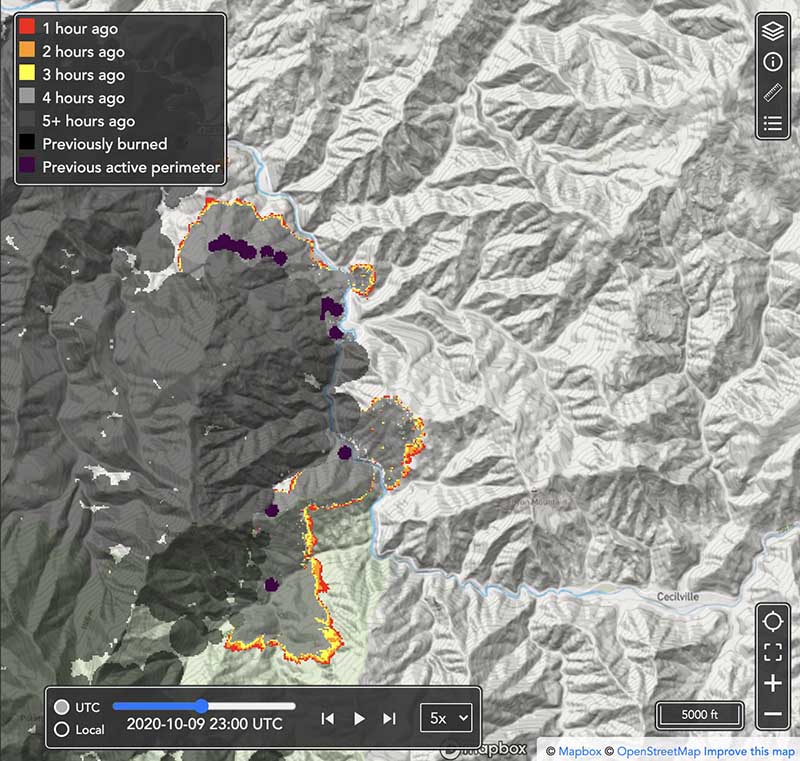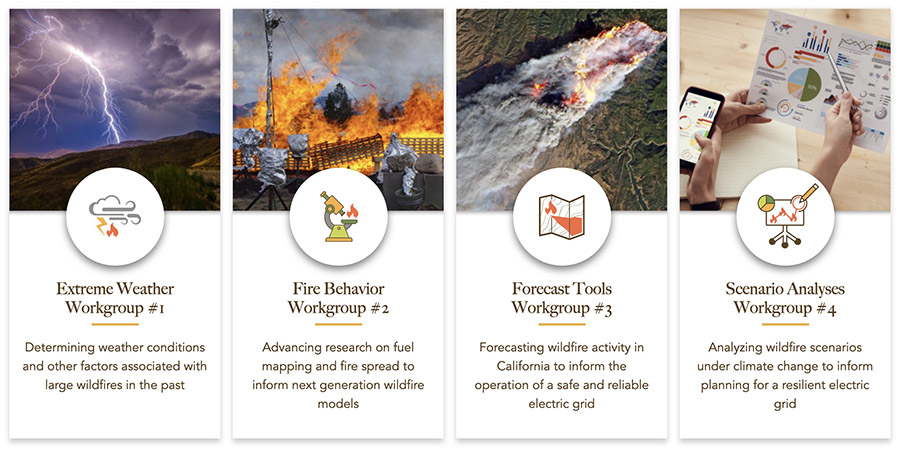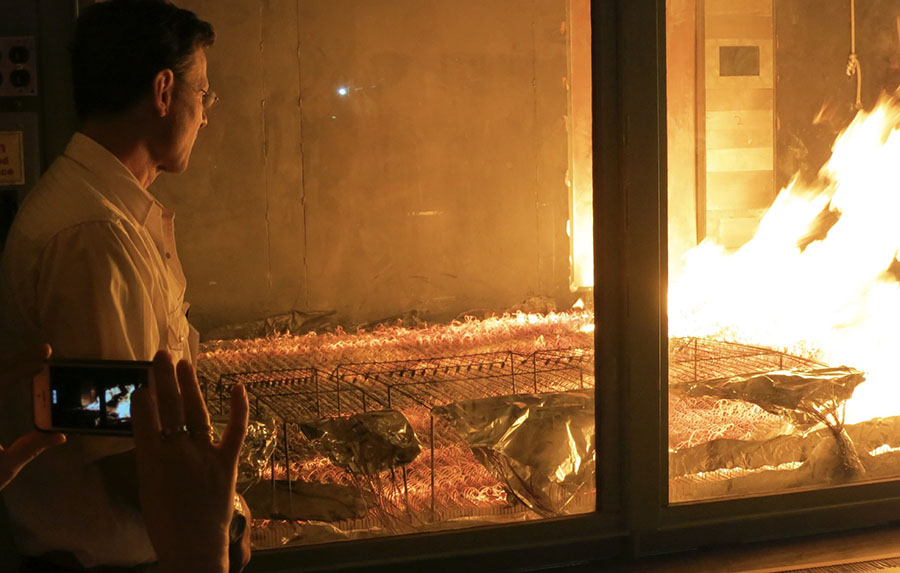
The U.S. Department of Commerce’s National Institute of Standards and Technology (NIST) has awarded 19 small businesses in 12 states a total of more than $4.4 million in grants to support innovative technology development. One of those grants, for $100,000, is to help build a system for automatically detecting and forecasting the spread of every wildfire in the continental United States and updating the forecasts as conditions change.
Reax Engineering Inc. of Berkeley, California, the company that received the grant, has a beta version of the forecasting tool online now just for the state of California. It is a work in progress and will eventually include data for fires in other states.
Wildfire forecasting is one of the four primary goals of Pyregence, a group of fire-science labs and researchers collaborating about wildland fire, where the forecasting tool now resides. The organization brings together initiatives and leading researchers from 18 institutions representing industry, academia, and government in an effort to transform how wildfire mitigation and adaptation measures are implemented. In addition to forecasting wildfire activity, wildfire scenario analyses will be produced to inform future wildfire risk and California’s 5th Climate Change Assessment, using open science and technology principles.

In order to predict the spread of wildfires, fire behavior models are run on computers. The versions that have been used for decades are not accurate for dealing with heavy dead and down fuels or fires spreading through the crowns of trees under extreme weather conditions. The goal of one of the four Pyregence workgroups, the Fire Behavior Workgroup, is to improve existing models or develop new ones. That effort is being led by Scott Stephens, Professor of Fire Science, and director of the University of California Center for Fire Research and Outreach.

Mark Finney, a researcher at the U.S. Forest Service Missoula Fire Sciences Laboratory, is part of the Fire Behavior Workgroup and will soon have access to a burn chamber much larger than the one in the photo above. It will reportedly be the size of a grain silo. These wind tunnel/combustion chambers are used to conduct burning experiments in a controlled environment under varying fuel, temperature, humidity, and wind conditions. It can lead to a better understanding of how vegetation burns, leading to improvements in predicting fire spread.
An article at Wired describes the planned burn chamber:
Once complete, that chamber will let him replicate wildfire fuel beds by piling logs and other material as much as a few feet deep. He will then ignite them, hit them with wind and moisture, and quantify their burn rate and energy-release rate—what he calls the “heat-engine part of mass fires.”
“Really what we’re looking for,” Finney says, “is how these things transition to flaming. Instead of just smoldering on the forest floor, how do they become actively involved in these large fires?”
If all goes well, Finney’s working group will eventually code three-dimensional digital simulations of various wildland fuel beds—digital cubes, in essence, not unlike Minecraft voxels—that can be stacked and arranged in infinite variation across landscapes generated by GIS mapping data.

I first visited the Fire Lab in 1970. The researchers were doing good work by gathering data and going to fires.
I share the concerns about GIGO and throwing money at fires, when stubbornness, denial, ass-covering, and self-righteousness are the main barriers to applications of science.
Instead of another grant to study “something” why doesn’t someone contact Mother Nature. She controls the fire environment. Or give the grant money to several seasoned wildland fire fighters and let them tell you what to expect.
Such a system already exists and is in production with CAL FIRE. CAL FIRE selected the Wildfire Analyst Enterprise risk forecasting and on-demand spread prediction system after evaluating 131 different submissions in their 2019 Request for Innovative Ideas initiative. Technosylva Inc. (La Jolla, CA) is the vendor (www.Technosyylva.com). This software is also in production with the three large IOUs in California, and has been used for several years. A system like this takes a lot more than $100,000 to build and most importantly to integrate into operational business processes. The system has been successfully applied to every wildfire in California this fire season and calibrated through use by FBANs, intel and operational users across the State.
1. Seems like Wildfires have a mind of their own ; and no amount of “forecasting” will help much ?
2. It will take a lot more than $ 100,000 to figure this out .
3. Put them out before they get out of control !